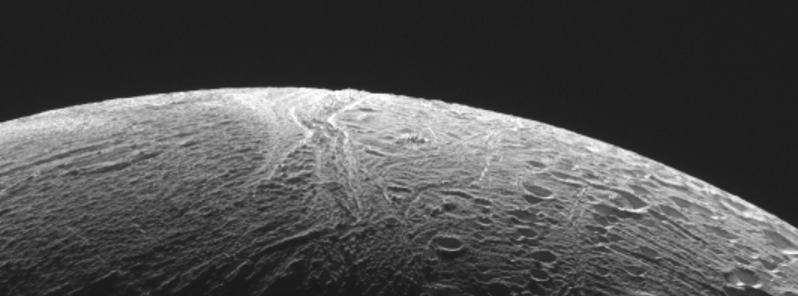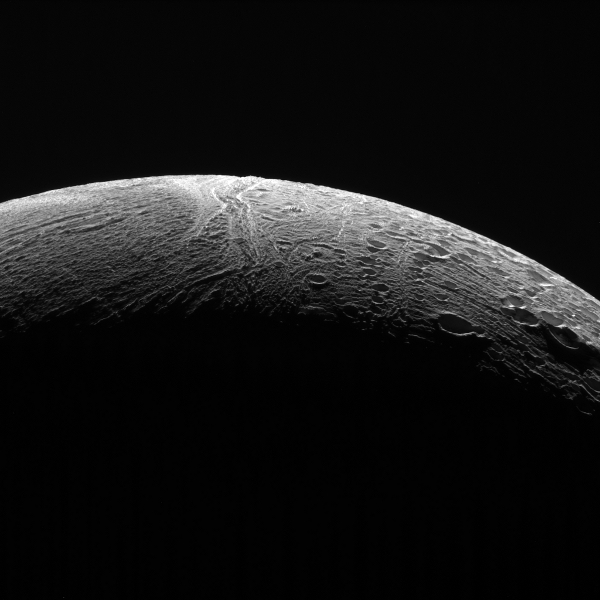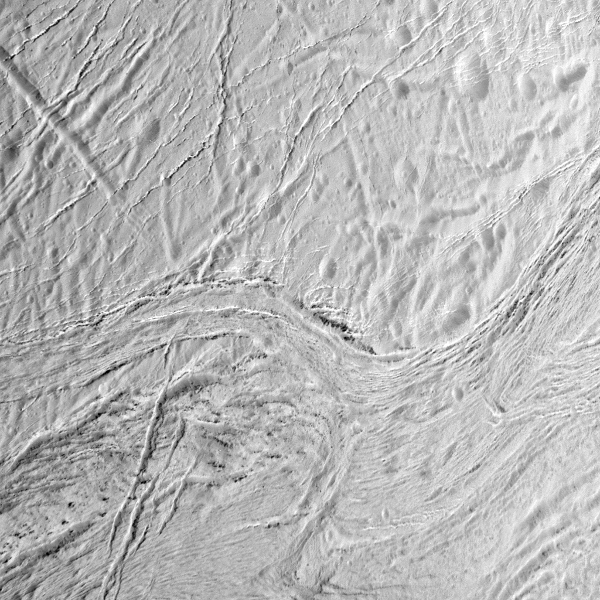Cassini makes final close flyby images of Saturn’s moon Enceladus

NASA's Cassini spacecraft made its 22nd and the final close flyby of Saturn's moon Enceladus on December 19, 2015 at 17:49 UTC and will now continue to observe the moon from a much greater distance. The spacecraft passed Enceladus at a distance of 4 999 km (3 106 miles) and transmitted final data and images from the mission.
The flyby has been focused on measuring the amount of heat coming through the ice from the moon's interior, according to NASA's experts. The heat output is an important parameter for understanding the mechanisms driving the plume of gas and icy particles spraying continually from an ocean below the surface.

This animation shows NASA's Cassini spacecraft during its December 19, 2015 flyby of Enceladus. Cassini's composite infrared spectrometer instrument will observe the moon's south polar terrain. Video credit: Marty Brennan, NASA's JPL
"Understanding how much warmth Enceladus has in its heart provides insight into its remarkable geologic activity, and that makes this last close flyby a fantastic scientific opportunity," explained Linda Spilker, Cassini project scientist at NASA's Jet Propulsion Laboratory, Pasadena, California.
Cassini will continue to observe Enceladus until the end of its mission, scheduled through September 2017, although now at a much larger distance and its closest point of approach will be over four times the distance of the latest flyby.


NASA's Cassini spacecraft peered out over the northern territory on Saturn's moon Enceladus, capturing this view of two different terrain types. A region of older terrain covered in craters that have been modified by geological processes is seen at right, while at left is a province of relatively craterless, and presumably more youthful, wrinkled terrain. Cassini acquired the view during its final close flyby of Enceladus, on December 19, 2015. Image credit: NASA/JPL-Caltech/Space Science Institute
"This final Enceladus flyby elicits feelings of both sadness and triumph. While we're sad to have the close flybys behind us, we've placed the capstone on an incredible decade of investigating one of the most intriguing bodies in the solar system," said Earl Maize, Cassini project manager at JPL.
Not long after arriving at Saturn, Cassini has made numerous discoveries of the geological activity of its nearby moon that prompted changes to the mission's flight plan to maximize the number and quality of flybys.


During its final close flyby of Saturn's moon Enceladus, NASA's Cassini orbiter shows this view featuring the nearly parallel furrows and ridges of the feature named Samarkand Sulci. Image credit: NASA/JPL-Caltech/Space Science Institute
"We bid a poignant goodbye to our close views of this amazing icy world. Cassini has made so many breathtaking discoveries about Enceladus, yet so much more remains to be done to answer that pivotal question, 'Does this tiny ocean world harbor life?'," Linda added.
A series of important discoveries made by Cassini spacecraft include the one about the material gushing from warm water fractures near the moon's south pole made after revealing Enceladus' surprising geological activity in 2005. In 2014, strong evidence was presented to confirm the existence of a regional subsurface sea and in 2015, a global ocean was confirmed to exist underneath the moon's icy crust.
Featured image: NASA's Cassini spacecraft making its final close flyby of Enceladus. The image shows the nearly parallel furrows and ridges of the Samarkand Sulci feature, December 19, 2015. Image credit: NASA/JPL-Caltech/Space Science Institute

Commenting rules and guidelines
We value the thoughts and opinions of our readers and welcome healthy discussions on our website. In order to maintain a respectful and positive community, we ask that all commenters follow these rules:
We reserve the right to remove any comments that violate these rules. By commenting on our website, you agree to abide by these guidelines. Thank you for helping to create a positive and welcoming environment for all.